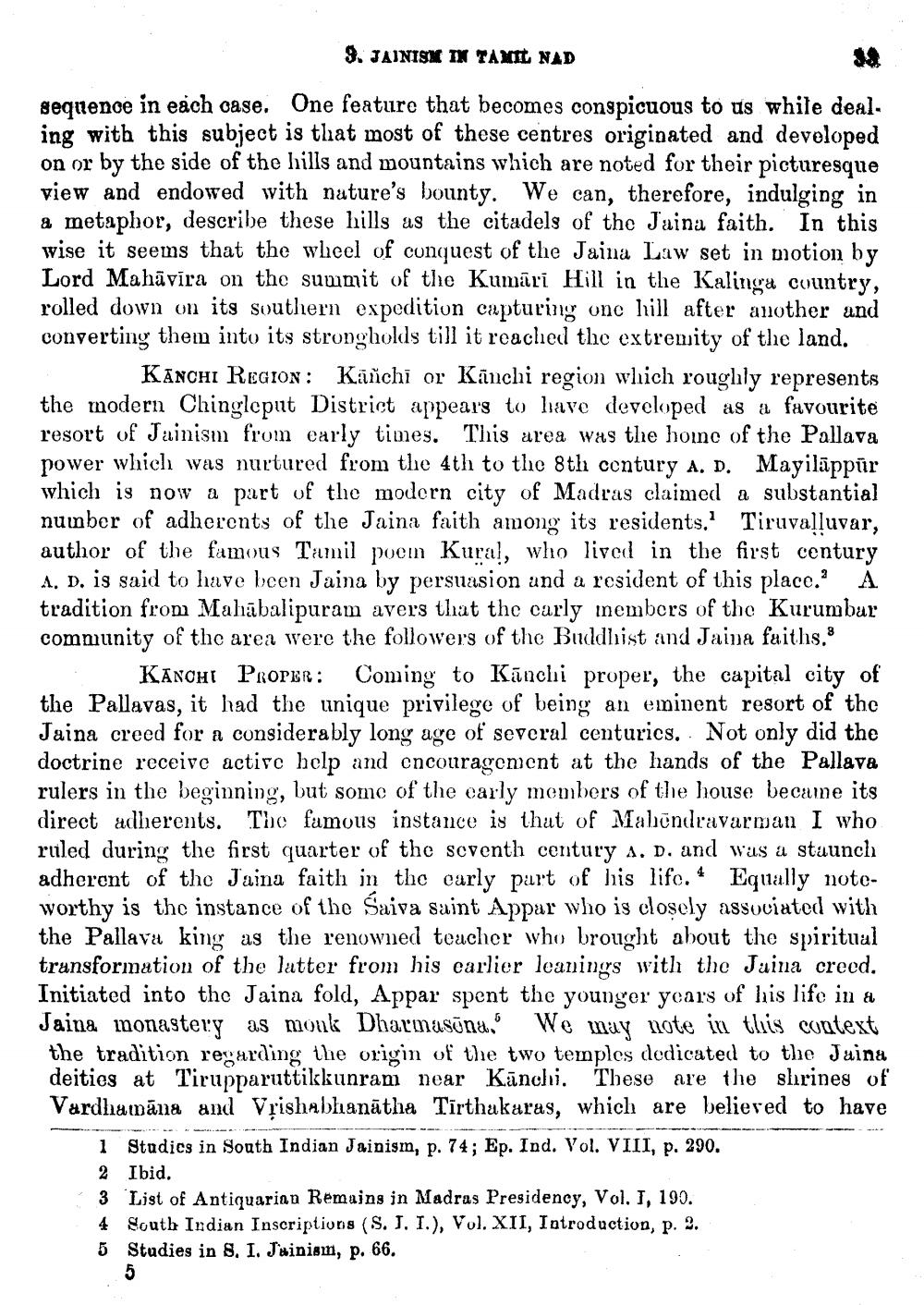________________
9. JAINISM IN TAMIL NAD
38
sequence in each case. One feature that becomes conspicuous to us while dealing with this subject is that most of these centres originated and developed on or by the side of the hills and mountains which are noted for their picturesque view and endowed with nature's bounty. We can, therefore, indulging in a metaphor, describe these hills as the citadels of the Jaina faith. In this wise it seems that the wheel of conquest of the Jaina Law set in motion by Lord Mahavira on the summit of the Kumari Hill in the Kalinga country, rolled down on its southern expedition capturing one hill after another and converting them into its strongholds till it reached the extremity of the land.
KANCHI REGION: Käйchi or Kanchi region which roughly represents the modern Chingleput District appears to have developed as a favourite resort of Jainism from early times. This area was the home of the Pallava power which was nurtured from the 4th to the 8th century A. D. Mayiläppür which is now a part of the modern city of Madras claimed a substantial number of adherents of the Jaina faith among its residents.' Tiruvalluvar, author of the famous Tamil poem Kural, who lived in the first century A. D. is said to have been Jaina by persuasion and a resident of this place. A tradition from Mahabalipuram avers that the early members of the Kurumbar community of the area were the followers of the Buddhist and Jaina faiths.
KANCHI PROPER: Coming to Kanchi proper, the capital city of the Pallavas, it had the unique privilege of being an eminent resort of the Jaina creed for a considerably long age of several centuries. Not only did the doctrine receive active help and encouragement at the hands of the Pallava rulers in the beginning, but some of the early members of the house became its direct adherents. The famous instance is that of Mahendravarman I who ruled during the first quarter of the seventh century A. D. and was a staunch adherent of the Jaina faith in the early part of his life. Equally noteworthy is the instance of the Saiva saint Appar who is closely associated with the Pallava king as the renowned teacher who brought about the spiritual transformation of the latter from his earlier leanings with the Jaina creed. Initiated into the Jaina fold, Appar spent the younger years of his life in a Jaina monastery as mouk Dharmasõna. We may note in this context the tradition regarding the origin of the two temples dedicated to the Jaina deities at Tirupparuttikkunram near Kanchi. These are the shrines of Vardhamana and Vrishabhanatha Tirthakaras, which are believed to have
1 Studies in South Indian Jainism, p. 74; Ep. Ind. Vol. VIII, p. 290. 2 Ibid.
3 List of Antiquarian Remains in Madras Presidency, Vol. I, 190.
4 South Indian Inscriptions (S. J. I.), Vol. XII, Introduction, p. 2. 5 Studies in S. I. Jainism, p. 66.
5




